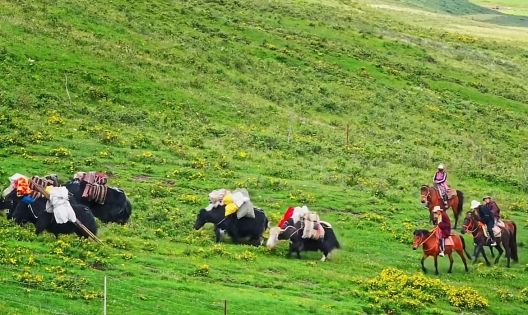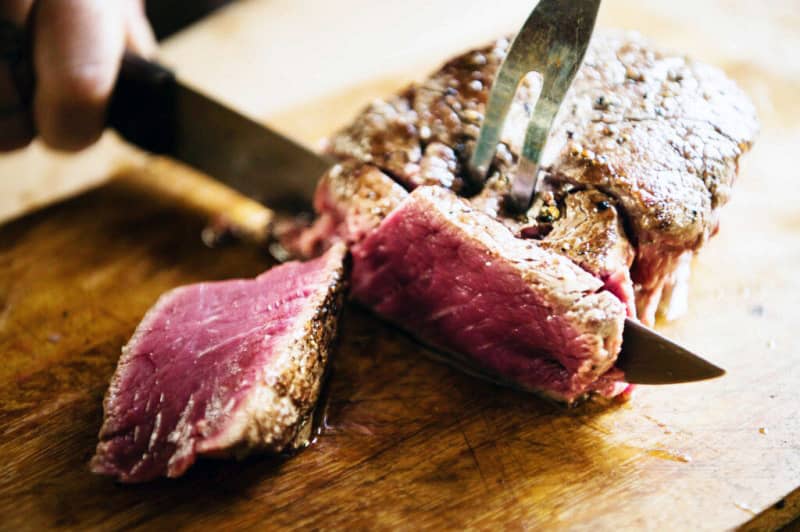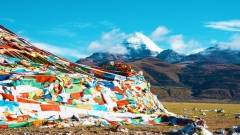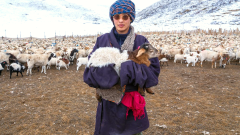On the high, windswept Tibetan Plateau—often called the “Roof of the World”—life is both beautiful and unforgiving. With an average altitude of over 4,000 meters (13,000 feet), oxygen levels are thin, winters are long, and resources are scarce. Yet, Tibetans have thrived here for centuries, thanks to a remarkable animal: the yak.
Revered as the “lifeline of Tibetans,” yaks are far more than livestock. They provide food, clothing, shelter, transport, and even spiritual significance. Without yaks, survival on the harsh plateau would have been nearly impossible.
Yaks as a Source of Food
For Tibetans, the yak is a cornerstone of nutrition:
-
Yak Meat: Rich in protein and lower in fat compared to beef, yak meat is a dietary staple. It is often dried into jerky, stewed with potatoes, or boiled in soups.
-
Yak Milk: High in fat and nutrients, yak milk is transformed into butter, yogurt, and cheese. Butter, in particular, plays a central role in Tibetan cuisine and rituals.
-
Butter Tea (Po Cha): Made from yak butter, tea leaves, water, and salt, this iconic Tibetan drink provides warmth and energy in the cold climate.
-
Cheese and Yogurt: Known as chhurpi and dri cheese (from female yaks, called dri), these are long-lasting sources of protein for nomadic families.
Yak products are not only food but also medicine; locals believe they help strengthen the body against altitude sickness and cold.
Clothing and Shelter
Yaks are the source of essential raw materials:
-
Yak Wool: Thick, warm, and durable, yak wool is spun into blankets, carpets, ropes, and traditional clothing. Nomadic families weave it into tents that withstand strong plateau winds.
-
Yak Hide: The hides are used for leather boots, bags, and protective clothing.
-
Yak Hair Tents: Black yak-hair tents are a hallmark of Tibetan nomadic life, providing portable homes that keep families warm during winter and cool during summer.
Thus, yaks literally cover Tibetans from head to toe and shelter them from the elements.
Transportation and Labor
Before modern vehicles reached Tibet, yaks were the primary beasts of burden:
-
Pack Animals: Yaks can carry loads of 100–150 kilograms across rugged mountain passes, making them indispensable for trade caravans and pilgrimages.
-
Riding Yaks: In remote areas and tourist spots like Yamdrok Lake, riding yaks is still common.
-
Plowing and Farming: In agricultural regions, yaks help plow fields and transport harvests.
Even today, yaks remain vital in areas where motorized transport is impractical.

Spiritual and Cultural Significance
Yaks are deeply woven into Tibetan identity and spirituality:
-
Religious Offerings: Yak butter lamps burn in every monastery and home, symbolizing the dispelling of darkness and ignorance.
-
Festivals and Art: During Tibetan New Year (Losar) and horse racing festivals, yaks are decorated with colorful ornaments, showcasing their importance.
-
Folklore and Songs: Yaks appear in Tibetan legends, proverbs, and folk songs, often representing strength, endurance, and loyalty.
For Tibetans, yaks are not just animals—they are companions and spiritual guardians.
Economic Value and Trade
Yaks support the Tibetan economy in multiple ways:
-
Yak Products for Trade: Meat, wool, hides, and butter are exchanged between nomads and farmers.
-
Tourism: Yak trekking, yak rides, and yak souvenirs (such as wool scarves or figurines) are popular among travelers.
-
Modern Industry: Yak wool has gained international recognition for its softness and warmth, marketed as a luxury textile similar to cashmere.
Thus, yaks bridge traditional nomadic life and modern economic opportunities.
Yaks in Tibetan Festivals and Daily Life
-
Yak Racing: A highlight of summer festivals, yak racing showcases the bond between herders and their animals. Crowds cheer as riders guide decorated yaks across fields.
-
Yak Dances: Folk performances often feature dancers imitating yak movements, symbolizing harmony between humans and nature.
-
Community Gatherings: Many social activities, from making butter tea to preparing dried meat, revolve around yak products.
Yaks are not only practical helpers but also symbols of joy and celebration.
Environmental Adaptation: Why Only Yaks Thrive Here
Yaks are uniquely adapted to Tibet’s extreme environment:
-
Dense undercoats and long outer hair insulate them against freezing winds.
-
Large lungs and hearts allow efficient oxygen intake in thin air.
-
Their ability to graze on sparse, high-altitude grass makes them sustainable in areas where other animals would perish.
In short, yaks are perfectly engineered for life on the plateau, ensuring Tibetans’ survival.
Yaks in the Modern World
Despite modernization, yaks remain indispensable in rural Tibet. However, challenges such as climate change, urban migration, and overgrazing affect yak populations. Efforts are now underway to protect yak herding traditions while introducing sustainable practices.
Tourism has also given yaks new roles. Many travelers to Tibet seek to experience yak culture firsthand—whether through yak butter tea tasting, staying in nomad camps, or taking photos with colorfully adorned yaks by sacred lakes.

Curious Yak
Conclusion
From providing food, clothing, and shelter to serving as transport, currency, and spiritual symbols, yaks are inseparable from Tibetan life. They are more than animals—they are the heartbeat of the plateau, the bridge between humans and nature, and the reason Tibetans have flourished in one of the world’s harshest environments.
This is why yaks are rightly called the “lifeline of Tibetans.” For any traveler to Tibet, witnessing the bond between yaks and people offers a profound glimpse into the resilience and richness of Tibetan culture.














